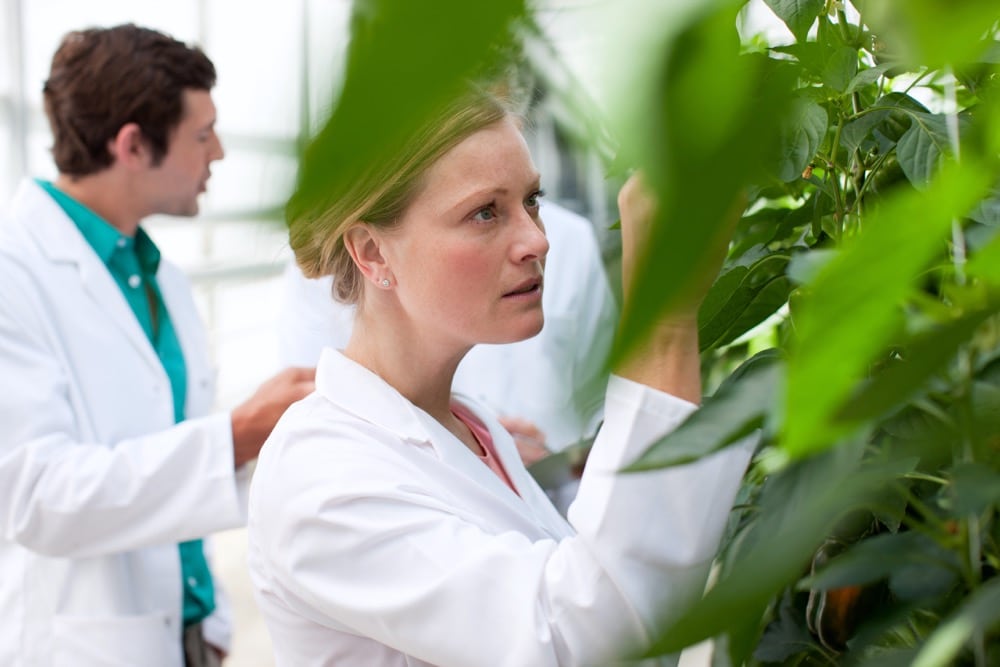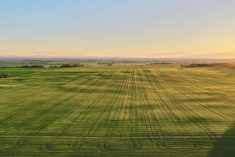It was February 2016 when Greg and Jolene Wilson made a momentous decision to leave their jobs with the same seed-and-chemical company and start their own independent research farm. The decision was fraught with anxiety, especially with their fourth child just born in December and the looming absence of a regular paycheque.
Yet the two reasoned that since they loved agriculture and derived great satisfaction from providing third-party research to different interests, concerns surrounding their old jobs would be replaced by a sense of discovery. They could build their business while learning about the needs of seed and chemical companies — as well as some in the public sector — in an increasingly concentrated and compact agri-food industry.
Five years later, their learning curve with BlackCreek Research is still relatively steep although it leans more to the side of enlightenment as far as taking on more projects with more crops and more locations around the province. Located southwest of Plattsville, Ont., BlackCreek covers about 110 acres belonging to the Wilsons, along with land they’ve secured with long-term lease agreements among neighbouring farms.
Read Also

Producers aren’t panicking over tariffs and trade threats
The influence of tariff and trade uncertainity on farm business decisions.
“We manage everything — tillage, maintenance — all of it,” says Greg, who previously worked for Syngenta and BASF. “We have a bunch of trials that are target-specific, whether it’s a weed or insect or soil or a crop that we don’t manage here.”
The Wilsons also operate a small parcel of land with beef cattle and a limited amount of crop production, but the research farm is the full-time occupation for them. In addition to attending University of Guelph and working most recently with Syngenta, Jolene was introduced to agriculture during her teen years working on dairy and hog operations near her hometown of Sarnia. Greg grew up across the road from his uncles’ farm and spent most of his spare time there.

The great unknown
Although the prospect of striking out on their own was a challenge the Wilsons felt they could take on, it doesn’t mean operating a research farm is for everyone. There are several aspects that would deter most people. For instance, unless a person is willing and able to follow procedures and protocols to the letter as laid out by clients, a research farm isn’t likely an option.
A quick glance at the BlackCreek Research website reveals the importance of GLP — good laboratory practices — which is mentioned often and throughout. Most of the work that Greg and Jolene and their team of associates conduct is done for private sector companies, with a small amount of research for public sector agencies. As companies have consolidated operations or closed their in-house research facilities, the demand for independent research farms has increased. As Greg states, when they started their farm, there were fewer than half a dozen such operations: today, there are more than six in southern Ontario alone, with some providing services across a diverse set of locations.
“The crop protection side is the biggest share of it and whether it’s efficacy trials — we do GLP residue work, as well — we’re not just screening for how it works on a certain pest,” he adds. “We spray a plot, collect tissue samples and flash-freeze and then send them to another third-party lab to see if there’s any residue left at certain times of the year. But we also do fertility work and variety screening for different diseases in the province.”
One of the more interesting aspects of their operation is the diversity of crops they’ve been studying. Corn, soybeans and wheat certainly make up the largest share of crops they deal with. But in 2020, they expanded their offerings with work on as many as 20 different crops, including strawberries, blueberries, cucumbers, tomatoes, potatoes, apples, peanuts, ginseng, green beans and dry beans.
“The joy of what we do is that we never know what we’re doing until May,” says Greg, without hesitation. “We don’t know what crops or pests we’re dealing with. It keeps us on our toes because we’re always learning.”

That makes March the anxious time on the calendar as they begin putting out bids and waiting for replies. Greg concedes that they could expand the field and approach grower organizations but the challenge there is most require proposals, and the Wilsons and their team are kept hopping enough at this point.
“You hope you’re going to be busy and you hope to have it figured out so you’re not going to be swamped for the year,” says Greg. “A lot of the projects you bid on come with some details but not all of them. Then there are projects that come in that are more complicated than you thought they were going to be.”
An in-furrow treatment on potatoes can become an in-furrow plus a chemigation treatment. That level of uncertainty or lack of detail doesn’t bother them — in fact, Greg views it as one of the benefits because it brings that opportunity to learn all over again.
Challenge accepted
The diversity of crops and demands for specific research components means the Wilsons and their team have to be quick to adapt to shifting requirements. Every year, says Greg, there’ll be some challenge needing an equipment adjustment or adaptation — even renting something he doesn’t have on the farm. For those retrofit needs, he credits working on his uncle’s farm growing up, when he was encouraged to work on different pieces of farm machinery. With that backing and some local mechanics and machine shops nearby, he can stay ahead of any equipment needs.
“I’ve designed a few different sprayers that are specific to some applications we had to do or modified planters to make them work for what we need to do,” he says. “It makes you think outside the box.”
In spite of an uncertainty in launching their own business or complications of envisioning a new piece of equipment, the past five years have seen tremendous growth for both Greg and Jolene. More than just forging a new path in life, they’ve also derived great satisfaction from the opportunity to learn with each passing year. As they were planning their transition in 2016, they set specific goals for five and 10 years, and according to Greg, they’ve already met their 10-year targets.
“This is something Jolene and I wanted to do and thought this would be a cool opportunity,” he adds. “It’s definitely done better than we ever dreamt of, and it’s fun knowing that everything we do is helping our neighbours and the industry.”
















